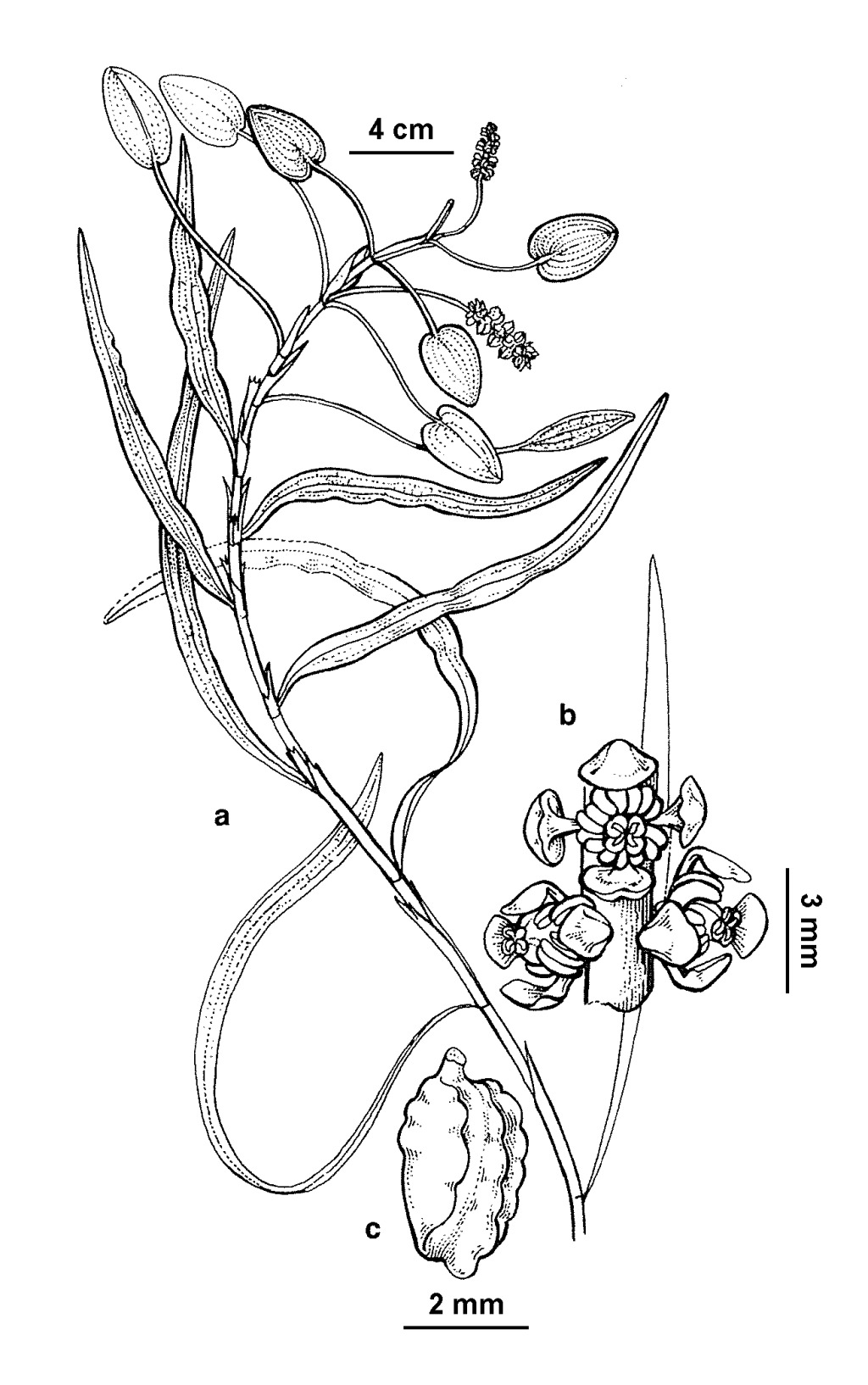Potamogeton sulcatus
A.Benn.Emergent herb; stem trailing; branches flattened, up to c. 3 m long. Leaf sheath free, up to 4 cm long, soon torn; ligule absent. Submerged leaves different from emergent ones. Submerged leaves thin and translucent, shortly petiolate; lamina lanceolate to elliptic, 6–12 cm long, 1.2–3.0 cm wide; base rounded to gradually tapered; margin flat or slightly undulate; apex acute to obtuse; 9–13 principal longitudinal veins, with finer transverse secondary veins; distal submerged leaves more like emergent leaves, but with petiole much longer than for emergent leaves. Emergent leaves floating, ± thick and leathery, petiolate; lamina ovate to elliptic, 4–8 cm long, 3.0–5.5 cm wide, dull; base rounded or cordate; apex obtuse; margin undulate, at least at base; 21–35 principal longitudinal veins, with transverse secondary veins indistinct. Inflorescence c. 20–60 flowered. Infructescence 3.2–5.0 cm long (excluding non-fruiting part of axis). Fruiting carpels 3.0–3.5 mm long (including dorsal point), dorsal surface with 3 well developed, crenulate ridges, distally with a ± curved point up to c. 1.2 mm long. Flowers and fruits Sep.–Apr.
MuM, Wim, VVP, VRiv, MSB, RobP, MuF, GipP, OtP, CVU, NIS, EGL, WPro, HNF, Strz, VAlp. Also SA, Qld, NSW, ACT. Occurs creeks, lagoons and irrigation channels, particularly in the Murray-Darling River system where it is frequently a serious aquatic weed.
In Victoria, P. sulcatus and P. cheesemanii were previously treated together in a heterogeneous P. tricarinatus species complex. These 3 species have similarly dimorphic submerged and emergent leaves. However, P. tricarinatus does not occur in Victoria. This species is distinguished from Victorian material by the carpels having a prominently tuberculate keel. Potamogeton sulcatus was previously treated in Victoria as P. tricarinatus Form I, it is distinguished from P. cheesemanii by the much larger, denser infructescences, larger, more prominently 3-ridged carpels, and larger leaves.
 Spinning
Spinning

